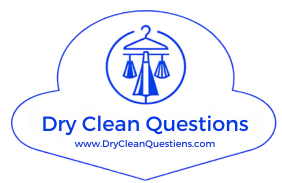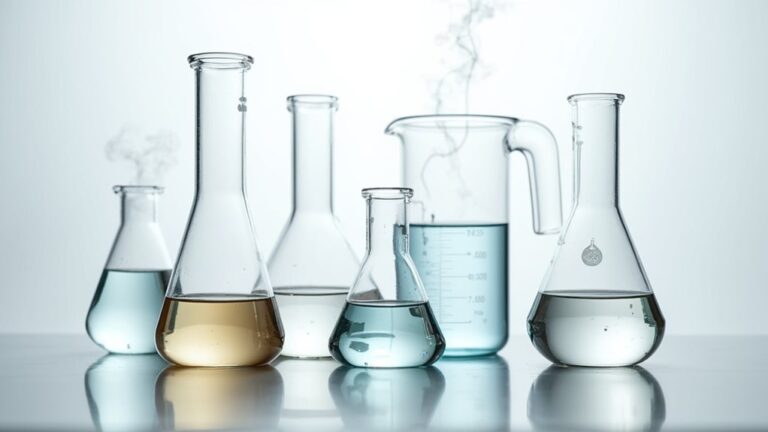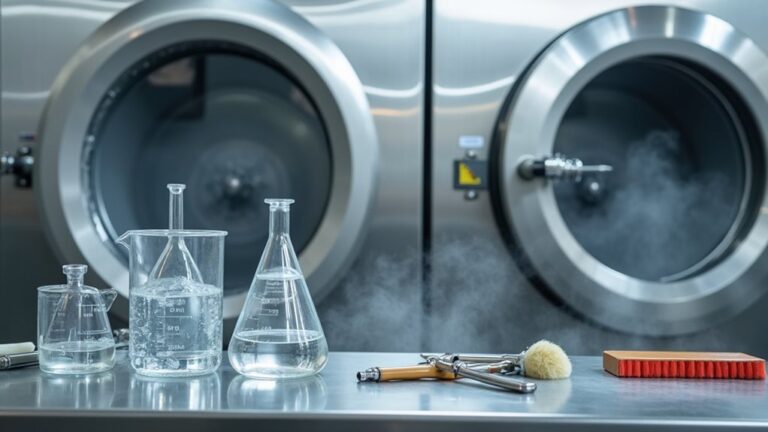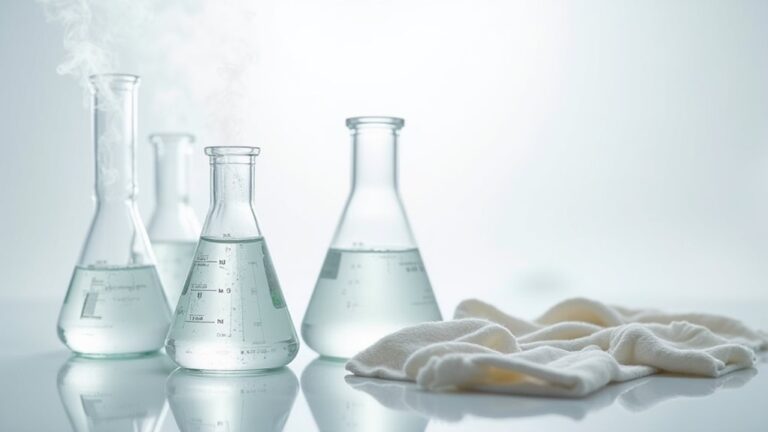Dry cleaning uses special solvents instead of water to clean delicate fabrics like silk, wool, and cashmere that would otherwise shrink or get damaged. The process involves inspection, pre-treating stains, cleaning with chemicals like perchloroethylene (though many shops now use eco-friendly alternatives), then pressing for that crisp finish. You’ll want to always tell your cleaner what caused any stains, since wine requires different treatment than oil. There’s quite a bit more to take into account when choosing the right cleaner.
How Dry Cleaning Works
Five distinct steps transform your wrinkled, stained garments into pristine clothing through the fascinating world of dry cleaning, and I’ll admit, I was completely clueless about this process until my favorite silk blouse met an unfortunate encounter with red wine at a dinner party 😅.
The dry cleaning process begins with inspection and tagging, where professionals identify problem areas and sort delicate fabrics by care requirements.
Next comes pre-spotting, followed by cleaning in a specialized machine that gently agitates your clothes in organic solvents rather than water, which could damage sensitive materials.
These solvents effectively remove stains without the harsh volatile organic compounds found in some cleaning methods, making modern dry cleaning more environmentally friendly than you might expect.
After the cleaning cycle, garments undergo solvent extraction and drying to remove all chemical residues before final pressing and quality control.
The Step-by-Step Dry Cleaning Process
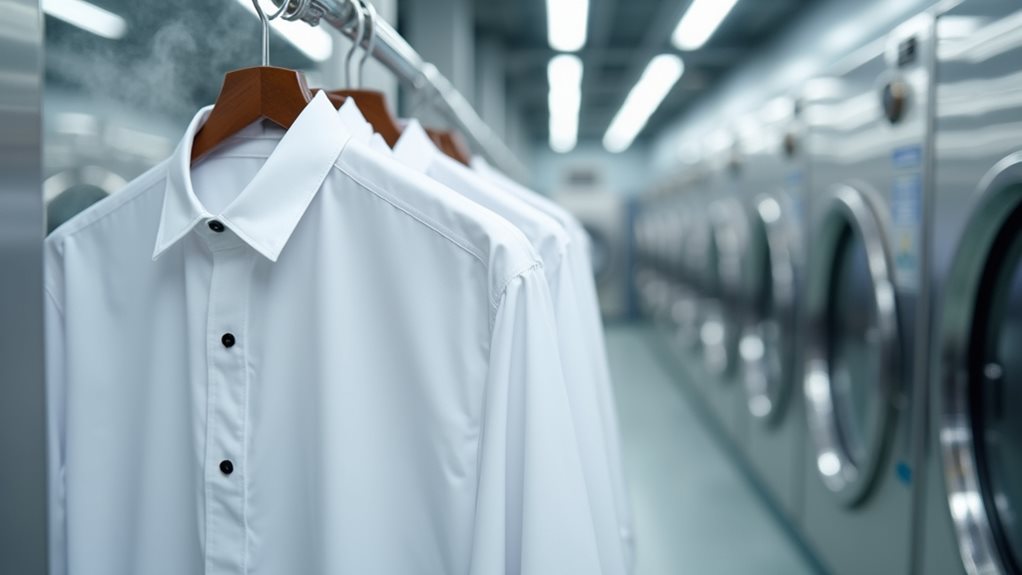
Now that you understand the basic mechanics behind dry cleaning, let me walk you through exactly what happens to your clothes from the moment you drop them off until they’re hanging pristine in your closet again.
The dry cleaning process starts with inspection, where professionals examine your garments for stains and attach identification tags—think of it as a medical check-up for your clothes.
Next comes pre-spotting, targeting stubborn marks with specialized treatments before the main event.
Think of pre-spotting as giving your clothes targeted therapy—treating problem areas with precision before the comprehensive cleaning begins.
Your delicate fabrics then take a gentle bath in non-water-based solvent, which removes dirt without the harsh effects of water.
After another inspection, any remaining spots get post-spotting attention, followed by finishing touches like pressing and steaming for that crisp, professional appearance.
Throughout the process, the cleaning solvent is distilled and recycled, making the dry cleaning operation more environmentally sustainable and cost-effective.
Types of Solvents Used in Dry Cleaning
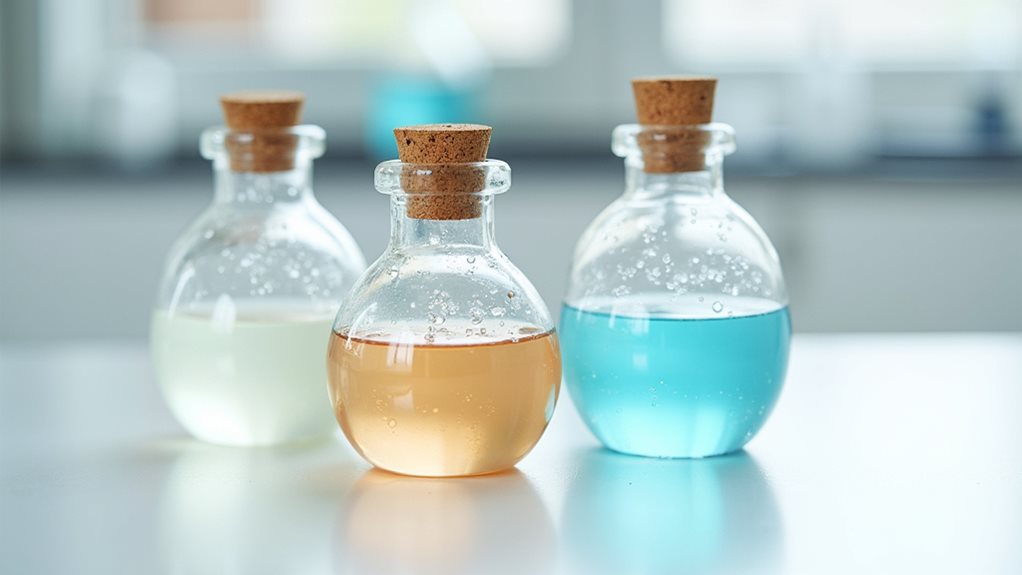
When you drop off your favorite silk blouse or wool suit, you’re probably not thinking about the chemistry happening behind those curtains.
But the type of solvent your dry cleaner chooses can make all the difference between pristine results and a ruined garment. For decades, most cleaners have relied on traditional chemical solvents like perchloroethylene (PCE) because they’re incredibly effective at dissolving oils and stains.
Though these powerful chemicals come with some serious health concerns that have many of us wondering if there’s a better way. Fortunately, the industry has been quietly developing eco-friendly alternatives that promise to clean your clothes just as well while keeping both you and the environment safer – and honestly, it’s about time we’d options that don’t make us hold our breath when we walk into the dry cleaner! 😅
PCE became the industry standard not only for its superior cleaning capabilities but also because it’s non-flammable and can be recycled within the cleaning process itself.
Traditional Chemical Solvents
Although you’ve probably never given much thought to what actually cleans your favorite blazer or that delicate silk dress, the world of dry cleaning solvents is surprisingly complex, with each chemical bringing its own personality to the fabric-cleaning party.
Perchloroethylene has been the industry’s workhorse since the 1930s, though it’s not exactly the healthiest option around.
You’ll find alternative solvents gaining ground, like hydrocarbon solvent options that won’t make you worry about toxic fumes.
Before perchloroethylene became standard, carbon tetrachloride was the primary solvent used in early dry cleaning operations until its serious health risks, including liver and kidney toxicity, led to its eventual phase-out.
The dry cleaning industry is slowly embracing non-toxic and eco-friendly solutions, especially as regulatory frameworks tighten their grip.
While traditional chemical solvents still dominate most cleaners, the shift toward safer options reflects our growing understanding that clean clothes shouldn’t come at the expense of our health.
Eco-Friendly Alternatives
As environmental awareness has shifted from trendy buzzword to genuine necessity, the dry cleaning industry has finally started embracing solvents that won’t make you feel guilty about keeping your wardrobe pristine.
You’ll find liquid carbon dioxide leading the charge as a non-toxic, reusable dry cleaning solvent that works in supercritical form, though it requires pricier equipment.
High flash hydrocarbons offer another path forward, delivering effective cleaning while reducing those nerve-wracking flammability risks.
Siloxane breaks down into harmless sand and water, making it surprisingly environmentally friendly despite some lingering health and safety implications from animal studies.
Meanwhile, emerging niche solvents like glycol ethers are quietly revolutionizing the industry, each bringing unique benefits as researchers continue developing these promising eco-friendly alternatives.
For those seeking completely chemical-free options, steam cleaning uses high-temperature water vapor to remove dirt and odors from garments without any solvents whatsoever.
When Your Clothes Need Dry Cleaning
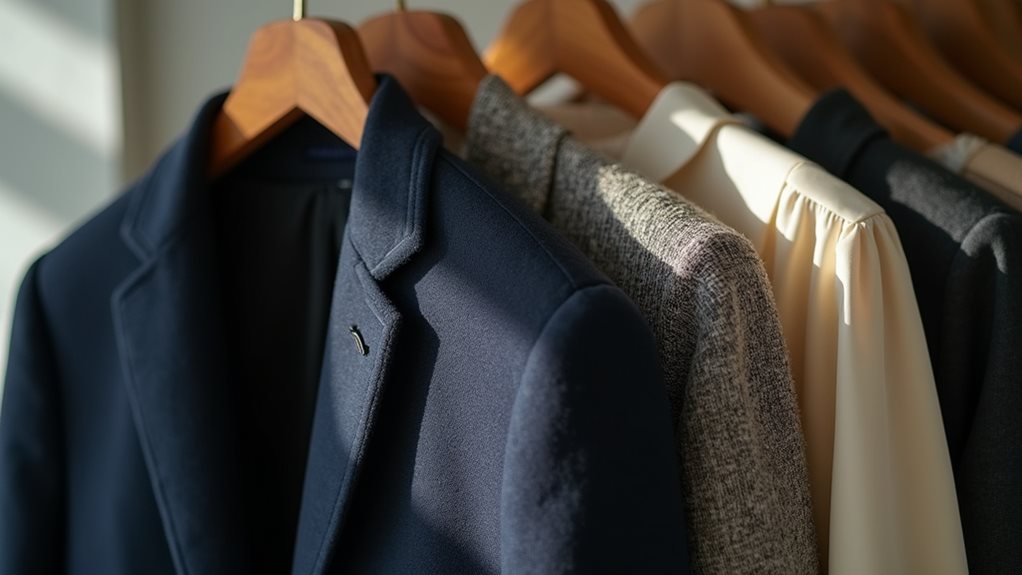
Before you toss that favorite silk blouse into your washing machine, let me share a hard-learned lesson from my own laundry disasters 😅.
I’ve learned the hard way that delicate fabrics like silk, wool, and cashmere absolutely need professional cleaning to maintain their integrity.
Always check care labels first – those “dry clean only” tags aren’t suggestions, they’re lifesavers for your wardrobe.
Tough stains, especially mysterious ones, require dry cleaning expertise that home remedies simply can’t match.
Your expensive garments, particularly those gorgeous pieces with beading or intricate details, deserve professional care to preserve appearance and longevity.
Dry cleaning uses chemical solvents instead of water to remove dirt and stains while preventing the damage, shrinkage, and color bleeding that water-based washing can cause.
Trust me, the cost of dry cleaning beats replacing a ruined favorite every time.
Environmental Impact and Green Alternatives
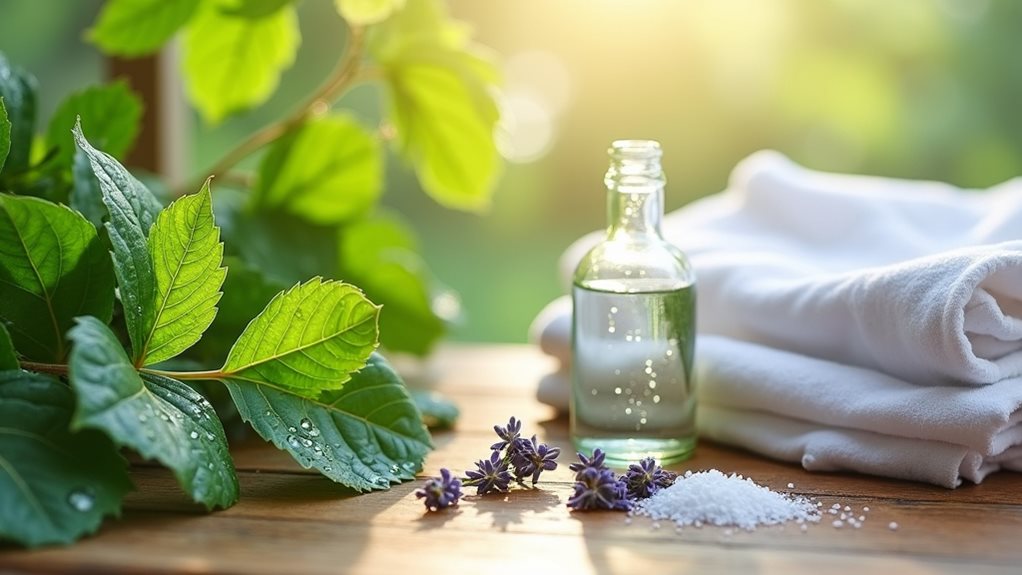
While browsing for a new dry cleaner last month, I discovered something that completely shifted my perspective on garment care – the environmental impact of traditional dry cleaning is far more considerable than I’d ever imagined.
Most conventional cleaners use perchloroethylene, a potential carcinogen that’s heavily regulated by the EPA, and honestly, that made me reconsider my fabric care choices entirely.
Fortunately, you’ve got fantastic eco-friendly alternatives available now.
Green dry cleaners often use wet cleaning techniques with biodegradable detergents, which work beautifully on various fabrics without harsh chemicals.
Some facilities employ liquid carbon dioxide or silicone-based solvents that break down harmlessly.
These sustainable practices aren’t just better for the planet – they’re responding to consumer demand for safer, more responsible garment care options. 🌱
Beyond environmental concerns, perc exposure can cause respiratory issues, skin irritation, and potential long-term health effects for both workers and customers.
Getting the Best Results From Your Dry Cleaner

You know, I learned the hard way after ruining my favorite silk blouse that reading those tiny care labels isn’t just a suggestion—it’s your clothing’s survival guide, and ignoring it means you’re basically playing Russian roulette with your wardrobe 😅.
When you walk into that dry cleaner, don’t just hand over your clothes like you’re making a deposit at the bank; instead, point out every single stain and spill the tea about what caused it, because that mysterious red spot could be wine, lipstick, or hot sauce, and each one needs a completely different battle plan.
The cleaner you choose matters more than you might think, so do your homework and find someone with stellar reviews, because entrusting your clothes to the wrong place is like letting your cousin’s friend’s brother watch your kids—it might work out, but why take that risk?
Pay attention to those circular symbols on your care labels, as they indicate specific dry cleaning requirements and solvent types that your cleaner needs to know about to properly handle your garments.
Check Garment Care Labels
Although it might seem like a small detail, those tiny care labels tucked inside your garments are actually your secret weapon for getting the finest dry cleaning results, and I learned this the hard way after ruining my favorite cashmere sweater 😅.
Garment care labels contain crucial cleaning instructions that tell you exactly which cleaning methods work best for your specific fabric composition. When you see “dry clean only” on delicate fabrics like silk, wool, or anything with beading, don’t risk damaging delicate materials by attempting home washing.
These symbols aren’t suggestions—they’re roadmaps to ideal results. Always check labels before heading to your cleaner, because items without care instructions are cleaned at your own risk, and trust me, replacing expensive pieces isn’t fun.
Additionally, structured clothing like suits and blazers should always be professionally dry cleaned to maintain their shape and prevent damage that washing machines could cause.
Communicate Stain Details
When you walk into a dry cleaner with a stained garment, the most important conversation you’ll have isn’t about pickup times or pricing—it’s about exactly what caused that stubborn mark, and I can’t stress enough how this single detail can make or break your cleaning results.
Whether it’s coffee, wine, or oil, each stain requires different treatment approaches since they’re either solvent-soluble or water-soluble.
Don’t forget to communicate how long the stain’s been there and any home remedies you’ve tried—trust me, I learned this the hard way after ruining a favorite shirt 😅.
Your dry cleaner needs this intel for proper pre-treatment and stain removal success, making their cleaning process far more effective.
Professional dry cleaning excels at removing oil-based stains, grease, and makeup that regular washing simply can’t handle, but has limitations with water-based stains like sweat and blood.
Choose Reputable Cleaners
After you’ve mastered the art of explaining your stain situation, the next step involves finding someone who’ll actually know what to do with that information—and let me tell you, not all dry cleaners are created equal.
I learned this the hard way when my favorite silk blouse came back looking like it had been through a wrestling match 😅.
Now I always research customer reviews before trusting anyone with my garments, because a reputable dry cleaner makes all the difference.
Look for establishments that’ll discuss their cleaning processes openly, explain which solvents used for different fabrics, and demonstrate genuine staff expertise when you describe stain issues—this transparency signals they’re committed to professional care and proper garment care.
History and Evolution of Dry Cleaning

Innovation often emerges from the most unexpected accidents, and dry cleaning‘s fascinating expedition began with two remarkable discoveries that would revolutionize how we care for our clothes.
Thomas Jennings pioneered this history in 1821 with his “dry scouring” patent, making him America’s first African American patent holder—what a groundbreaking achievement!
Then Jean-Baptiste Jolly accidentally spilled kerosene on a stained tablecloth in 1825, discovering the magic of solvent cleaning.
Early dry cleaning relied on flammable petroleum solvents that were, frankly, pretty dangerous.
By the 1930s, perchloroethylene became the industry standard, though we later learned it’s carcinogenic (yikes!).
Today’s environmentally friendly solvents represent our ongoing quest to balance effective cleaning with safety, proving that even mundane industries can evolve responsibly.
